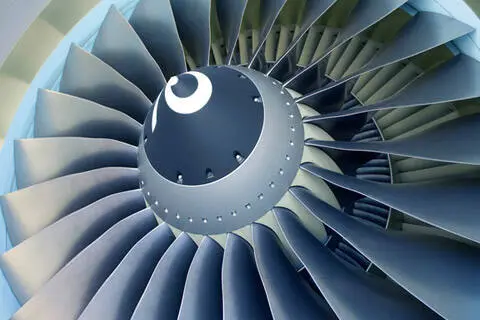Turbines

Whether you work with hydro, wind, thermal, or alternative power generation; power generators; low voltage or high voltage distribution; power distribution racks or cables; smart grid or ensuring workplace safety, the power industry has a strong focus on standardization and interoperability.
ISO 8068:2006
Lubricants, industrial oils and related products (class L) - Family T (Turbines) - Specification for lubricating oils for turbines
ISO 8068:2006 specifies the minimum requirements for turbine lubricants, as delivered. It specifies the requirements for a wide variety of turbines for power generation, including steam turbines, gas turbines, combined-cycle turbines with a common lubrication system and hydraulic (water driven) turbines. This International Standard does not specify the requirements for wind turbines, which are dealt with in ISO 12925-1. Whilst power generation is the primary application for turbines, steam and gas turbines can also be used to drive rotating equipment, such as pumps and compressors. The lubrication systems of these driven loads can be common to that of the turbine. Turbine installations incorporate complex auxiliary systems requiring lubrication, including hydraulic systems, gearboxes and couplings. Depending upon the design and configuration of the turbine and driven equipment, turbine lubricants can also be used in these auxiliary systems. ISO 8068:2006 should be read in conjunction with ISO 6743-5, the classification of different turbine lubricant types. The lubricants considered in ISO 8068:2006 are mineral oils, synthetic lubricants (ester and polyalphaolefin types intended for high-temperature gas turbines), synthetic lubricants (ester and polyalphaolefin types, environmentally acceptable for use in hydraulic turbines) and fire-resistant phosphate-ester type lubricants.
ASME TDP-1-2013
Prevention of Water Damage to Steam Turbines Used for Electric Power Generation: Fossil-Fueled Plants
ASME's TDP-1 Standard provides recommended practices for the prevention of water damage to steam turbines used in fossil-fuel-fired electrical power generation. These practices address damage due to water, wet steam, and steam backflow into a steam turbine and are applicable to conventional steam cycle, combined cycle and cogeneration plants. They cover design, operation, inspection, testing, and maintenance of those aspects of the following power plant systems and equipment concerned with preventing the induction of water into steam turbines and associated systems and equipment: motive steam systems; steam attemperation systems; turbine extraction/ admission systems; feedwater heaters; turbine drain systems; turbine steam seal systems; start-up systems; condenser steam and water dumps; steam generator sources. Any connection to the turbine is a potential source of water either by induction from external equipment or by accumulation of condensed steam. The sources treated herein specifically are those found to be most frequently involved in causing damage to turbines. Although water induction into the high and intermediate pressure turbines have historically been recognized as the most damaging, experience has shown that water induction in low pressure turbines can cause significant damage.

EA-3-2009(R2014)
Energy Assessment for Steam Systems
This Standard covers steam systems that are defined as a system containing steam generator(s) or other steam source(s), a steam distribution network and end-use equipment. Cogeneration and power generation components may also be elements of the system (gas turbines, backpressure steam turbines, condensing steam turbines). If steam condensate is collected and returned, the condensate return subsystem is a part of the steam system. This Standard sets the requirements for conducting and reporting the results of a steam system energy assessment (hereafter referenced as an assessment) that considers the entire system, from energy inputs to the work performed as the result of these inputs. An assessment meeting this standard need not address each individual system component or specific system within an industrial facility with equal weight; however, it shall be sufficiently comprehensive to identify the major opportunities for improving the overall energy performance of the steam system. This Standard is designed to be applied primarily at industrial facilities, but most of the specified procedures can be used in other facilities such as those in the institutional and commercial sectors. Use of this Standard and accompanying Guidance Document should increase the quantity and quality of energy assessments performed, with significant potential savings in implemented energy costs.
ASTM D4378-20
Standard Practice for In-Service Monitoring of Mineral Turbine Oils for Steam, Gas, and Combined Cycle Turbines
1.1 This practice covers the requirements for the effective monitoring of mineral turbine oils in service in steam and gas turbines, as individual or combined cycle turbines, used for power generation. This practice includes sampling and testing schedules to validate the condition of the lubricant through its life cycle and by ensuring required improvements to bring the present condition of the lubricant within the acceptable targets. This practice is not intended for condition monitoring of lubricants for auxiliary equipment; it is recommended that the appropriate practice be consulted (see Practice D6224 ). 1.2 This standard does not purport to address all of the safety concerns, if any, associated with its use. It is the responsibility of the user of this standard to establish appropriate safety, health, and environmental practices and determine the applicability of regulatory limitations prior to use. 1.3 This international standard was developed in accordance with internationally recognized principles on standardization established in the Decision on Principles for the Development of International Standards, Guides and Recommendations issued by the World Trade Organization Technical Barriers to Trade (TBT) Committee.
